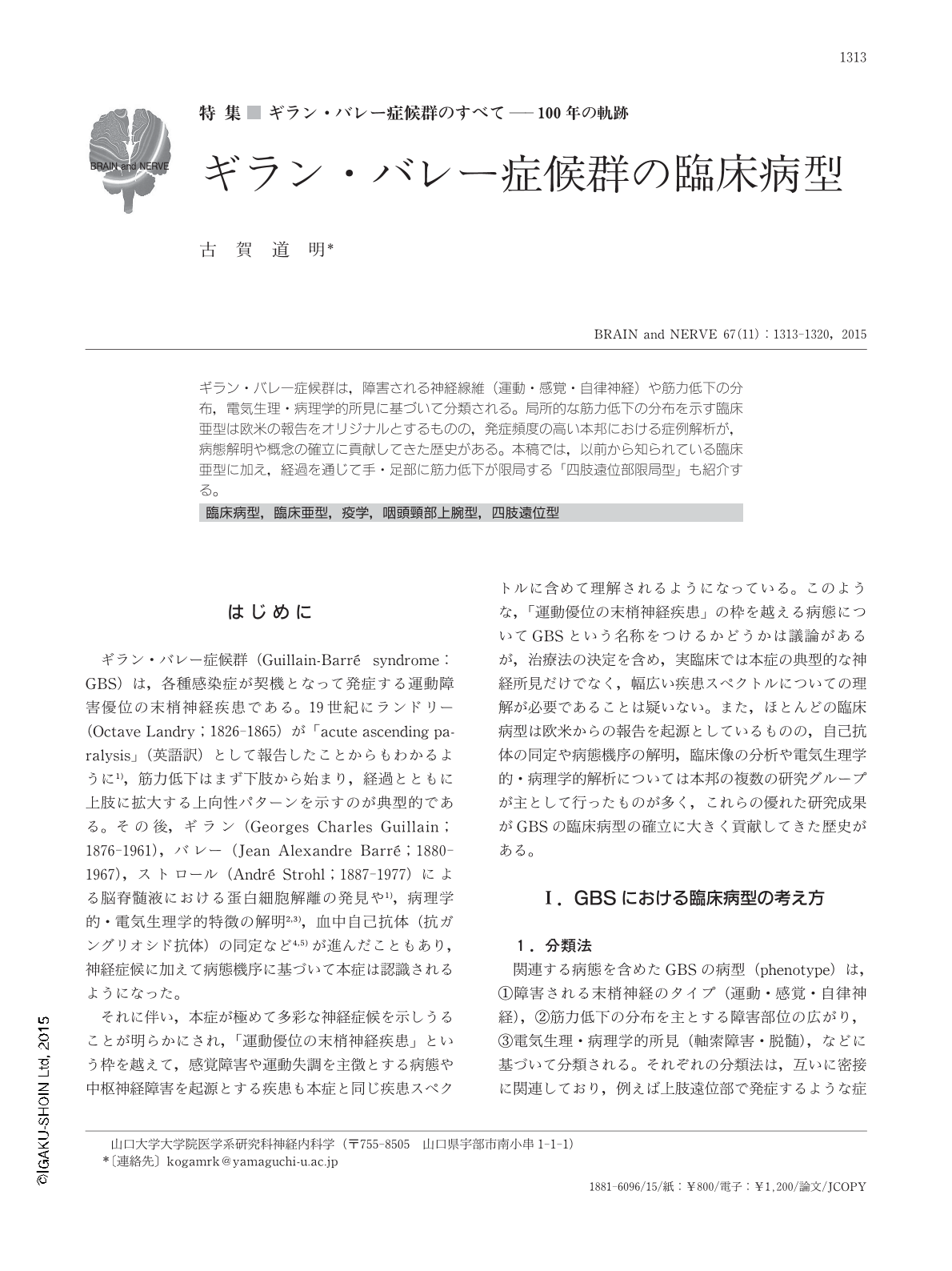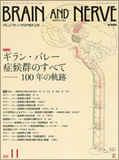Japanese
English
- 有料閲覧
- Abstract 文献概要
- 1ページ目 Look Inside
- 参考文献 Reference
ギラン・バレー症候群は,障害される神経線維(運動・感覚・自律神経)や筋力低下の分布,電気生理・病理学的所見に基づいて分類される。局所的な筋力低下の分布を示す臨床亜型は欧米の報告をオリジナルとするものの,発症頻度の高い本邦における症例解析が,病態解明や概念の確立に貢献してきた歴史がある。本稿では,以前から知られている臨床亜型に加え,経過を通じて手・足部に筋力低下が限局する「四肢遠位部限局型」も紹介する。
Abstract
Guillain-Barré syndrome can be classified into several phenotypes according to the type of predominantly disturbed nerve fibers, distribution of muscular weakness, and electrophysiological and pathological findings. Although several regional variants including Fisher syndrome and pharyngeal-cervical-brachial weakness were initially reported in Western researchers, many labor-intensive studies by Japanese researchers have significantly contributed to defining and highlighting these variants. This review summarizes the several regional variants of Guillain-Barré syndrome while highlighting the substantial contributions made by Japanese investigators. Furthermore, a new regional variant named "distal limb weakness" is proposed, in which regional weakness of hands and feet is observed throughout the disease course. It is considered a mild phenotype of acute axonal motor neuropathy after Campylobacter jejuni enteritis.

Copyright © 2015, Igaku-Shoin Ltd. All rights reserved.


